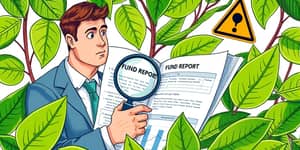
In an age where environmental crises, social inequities, and economic uncertainty intertwine, the need for holistic sustainability strategies has never been greater. By intentionally spreading efforts across multiple sustainable sectors, organizations and communities can amplify their positive effects, build resilience, and drive systemic transformation.
Sustainability rests on three interconnected pillars: environmental, social, and economic. The environmental pillar focuses on minimizing waste and emissions, conserving resources, and regenerating natural systems. The social pillar emphasizes health, equity, and fair labor, ensuring that communities thrive and access vital services. The economic pillar demands prudent, long-term resource use to maintain businesses and livelihoods over time.
Too often, initiatives target a single pillar—reducing carbon emissions or improving labor conditions—without recognizing that true resilience emerges when all dimensions work in concert. Integrating efforts across these domains and across sectors unlocks compounding benefits and addresses root causes rather than isolated symptoms.
Diversification across sustainable sectors isn’t merely a buzzword; it is a strategic imperative. It reduces exposure to sector-specific risks, such as supply-chain disruptions or regulatory shifts, while tackling multiple Sustainable Development Goals simultaneously—climate action, poverty reduction, gender equality, and decent work.
Consider a company that invests solely in renewable energy. If market prices for solar technology shift abruptly or policy incentives change, that investment may falter. However, a diversified portfolio spanning clean energy, sustainable agriculture, green transportation, and circular manufacturing weathers shocks more effectively.
By engaging across sectors, organizations can:
This table highlights representative practices and metrics across key sectors. Leading companies—such as Suez cutting emissions by 95% through energy transition, or Unilever sourcing responsibly and boosting recycling rates—demonstrate that long-term performance aligns with deep sustainability commitments.
Implementing a diversified sustainability strategy begins with a clear audit of existing initiatives and an identification of complementary opportunities. Follow these steps to chart an integrated course:
For example, a consumer goods company can partner with regenerative farms to secure ethically grown ingredients while investing in solar arrays at processing plants, thus reducing operational costs and carbon footprints simultaneously.
Data-driven impact measurement is crucial for transparency, stakeholder trust, and continuous improvement. High-sustainability firms report both environmental and social metrics in financial disclosures, outpacing low-sustainability peers by wide margins.
When employees, investors, and customers see real numbers—like Suez’s 95% emission cuts or Unilever’s sustainable sourcing goals—they become advocates, not critics.
True transformation depends on bringing people along. Engage employees through interactive training programs on sustainable best practices, and empower them to suggest projects. Incentivize suppliers with sustainability scorecards and recognize top performers with public awards.
Consumers, too, drive impact. Use storytelling to convey your sustainability journey—highlighting farmers from regenerative agriculture programs or communities benefiting from water recycling. This builds brand loyalty and encourages wider adoption of sustainable choices.
Diversifying across sustainable sectors is a potent strategy for anyone committed to durable, large-scale impact. By aligning environmental stewardship, social equity, and economic viability in multiple arenas, we strengthen resilience, catalyze innovation, and advance toward a regenerative future.
Hoy’s challenges require tomorrow’s solutions—solutions born from collaboration, data-led learning, and an unwavering dedication to fairness and planetary health. Embrace diversified sustainability. Together, we can reshape industries, uplift communities, and safeguard our shared home for generations to come.
References













